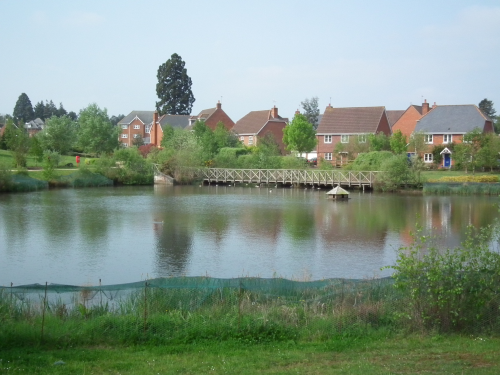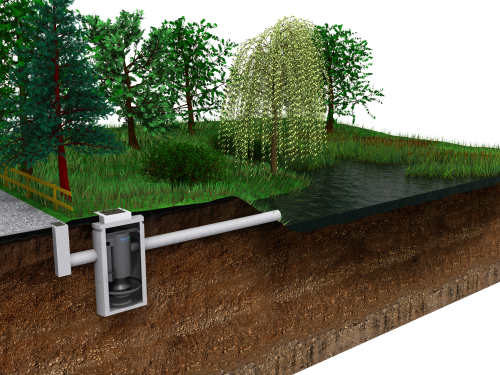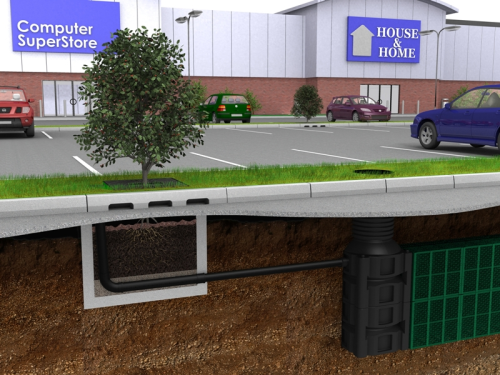


According to a new report by the World Meteorological Organisation (WMO), disasters caused by weather, climate and water-related hazards are on the rise worldwide. It seems as if severe weather patterns are tormenting countries across the globe with the same ruthlessness whether rich or poor, developed or developing. The world saw nearly five times as many natural disasters in the first decade of the 21st Century as it did in 1970.
Flood risk the greatest threat
Of all the consequences of climate change, increased flood risk poses the greatest threat. According to the WMO report, about 80% of the 3,496 disasters between 1971 and 2010 were due to flooding and storms. We are going to experience rising sea levels and more intense rain. There will be greater swings between flooding and drought.
The UK’s Committee on Climate Change reflected similar predictions in a report published earlier this year. The committee, which advises the UK Government on climate change resilience, warned that three-quarters of England’s existing flood defences are inadequately maintained. While improvements have been made to flood resilience, it is not yet enough to prepare for the weather to come.
In winter 2014, parts of England saw rainfall unprecedented in 250 years. In January alone some areas experienced three times the average and 7000 properties were flooded. The UK Government pledged an extra £270million after the winter floods, but only to repair the damage done.
There can be little doubt that climate change is moving the goalposts for urban water management and we need to respond quickly and creatively. Population growth and continued development are placing ever-greater challenges for managing urban water.
Political memories can be short when it comes to paying for flood protection, although there is good reason for investment in flood resilience in urban environments. Every £1 invested in flood defences in the UK has been calculated to save £8 in damage to property.
To a householder or business owner, every flood whether large or small is a costly disaster. What’s more it's not just large-scale coastal and river flooding that is stretching urban infrastructures beyond their limits. The majority of flooding we experience is from surface water.
Surface water flooding
Built environments are largely made up of impermeable surfaces. Where the pre-developed natural landscape would have enabled surface water to be infiltrated into the ground, close to where the rain falls, in the developed environment rainwater is frequently conveyed over long distances through underground pipes. The water has to be treated by energy-intensive sewage treatment plants and risks causing sewage overflows into rivers and the sea.
Critically, it’s not just water quantitywe need to be concerned about. Surface water picks up and carries pollution, trash, silt and sediment, metals and hydrocarbons, with it, discharging into watercourses or into sewer networks.
Waste or resource?
Increasingly, more sustainable and integrated approaches are being developed that recognise that controlling water is not just a cost, but an opportunity to create value in urban environments.
It’s an evolution that’s happening all over the world. Countries are developing their approaches and legislative frameworks to water management in different ways and, as that that happens, our ability to share and adopt best practice is rapidly accelerating.
Latest thinking has also linked sustainable solutions to rainwater capture and re-use. In particular, there is a growing recognition that better use and re-use of water presents an opportunity to achieve multiple benefits for communities; that water is a resource to be exploited, rather than waste to be ‘managed’ and flushed away.
Multiple values
The concept of ‘Ecosystems Services’ places greater emphasis on the multiple values that surface water drainage features can contribute to the economic wellbeing of a community. In this way, the value is justified not just in terms of cost of the drainage, but in terms of amenity benefits provided, for example through landscaping, biodiversity and leisure facilities and so on.
Approaches such as low impact development (LID) and Green Infrastructure in the US, together with water sensitive urban design (WSUD) from Australia have made significant contributions to global thinking. In the UK, we have been campaigning for decades for more widespread uptake of sustainable drainage systems (SuDS).
Sustainable Drainage Systems
The principle of SuDS is that they are designed and engineered to manage surface water as close as possible to where it falls by mimicking natural paths and processes. SuDS fulfil the joint objectives of quality, quantity and amenity using a wide toolbox of techniques to deliver attenuation, infiltration, flow control and water treatment. SuDS can be natural features or manufactured devices, or a combination of both.
Effective sustainable drainage systems don’t just control water quantity; just as importantly they improve the quality of water being discharged back into the environment. Surface water flows lift sediments and pollutants from hard surfaces such as fields, roads and industrial sites and carry them into rivers and watercourses.
The European Water Framework Directive is driving forward legislation in the UK, setting binding targets with high standards for treating diffuse pollution in surface water run-off.
A vision for widespread SuDS
New regulations are soon expected to make Sustainable Drainage Systems (SuDS) compulsory in England and Wales for new development.But the sobering fact is they are only applicable to new development. Even when the legislation is in force and the phased implementation completed over the next few years, the flood-resilience contribution made will be just the tip of the iceberg.
The real challenge comes in upgrading and improving the existing surface water drainage infrastructure. In the industry we give this the jargon tag of ‘retrofit SuDS’. Because they are often smaller and less grandiose compared with new developments, retrofit SuDS schemes can seem like a poor relation. But in reality, they are the lifeblood of improving surface water flooding resilience and water quality.
The responsibility of business
The challenge of retrofitting sustainable drainage to tackle surface water flooding ‘hotspots’ and improve water quality is particularly relevant for commercial and industrial premises. Businesses might have, for example, high quantities of runoff from roofs, car parks, vehicle loading bays or waste collection areas.
Each commercial activity comes with its own challenges, and risks, for effective surface water management and pollution containment. The contribution of business needs to cover both better flood protection control and improved surface water quality. The solutions include rainwater re-use, for example collecting water from the vast roofs of out of town shopping centres and using it for toilet flushing or vehicle cleaning.
Surface water treatment
High quantities of waste materials, sediments and pollution can often be present in surface water particularly during the earlier stages of a rain storm event. If the run-off is left untreated, the receiving waters can suffer extensive and damaging pollution which affects the entire ecosystem.
Pollutants that need to be removed from runoff include floating matter like litter, sediments and silts, heavy metals, hydrocarbons and organics, faecal matter and dissolved chemicals such as fertilisers and nutrients.
Most pollution in runoff is attached to sediment particles, so removing the sediment results in significant pollutant removal. Sediment can contain high concentrations of hydrocarbons, and heavy metals such as lead, copper and cadmium. It can also build up in rivers and drainage systems and increase flood risk.
Toolbox
Choosing from the whole toolbox of techniques using natural and manufactured features is the best way to deliver the optimum outcome for pollutant removal, depending on the site conditions. Especially when it comes to meeting water quality objectives, manufactured devices can provide predictable performance with well-understood maintenance regimes – particularly important in industrial settings. They can also enable, enhance or protect ‘natural’ features designed to add amenity value.
Devices such as the Hydro Downstream Defender and the Hydro Up-Flo Filter deliver surface water filtration and treatment to meet the pollutant removal requirements of a site. Using manufactured devices provides a solution in a small footprint, which can be essential where development land is at a premium, or in a tight retrofit situation.
The consequences of Climate Change are not going away any time soon and that means we have to regard the need for better urban water management as a matter of urgency. The techniques and technologies are already well-developed across the world for every country to learn from.
Hydro Downstream Defender® and the Hydro Up-FloTM are trademarks of Hydro International.






